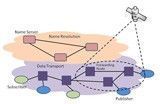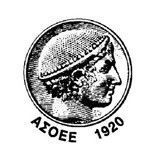
-
StatusCompleted
-
Status date2013-11-05
-
Activity Code1B.049
The φSAT project studied and assessed the potential role of SatCom with respect to the Future Internet (FI) networking research trends at the EU and global level and investigated the technical feasibility and business viability of the integration of SatCom with terrestrial FI networks.
The specific objectives of the φSAT project are the following:
- To conduct a State-of-the-Art review of FI network transport technologies at the EU and global level;
- To identify most pertinent technological solutions for SatCom integration within FI networks;
- Identify security requirements for FI and Satcom architectures and discuss existing FI security architectures;
- To investigate potential scenarios for the integration of SatCom with terrestrial FI networks;
- To propose and validate reference architectures for integrated terrestrial/satellite FI networks;
- To address the socio-economics issues related to SatCom integration within FI networks;
- To assess the commercial viability of FI technologies for future SatCom services exploitation;
- To analyse the roles’ evolution of main players induced by the adoption of FI technologies in future SatCom systems;
- To provide recommendations for future work and a technology development roadmap;
- To disseminate the project results in international fora, towards both satellite- and terrestrial-oriented audiences.
The φSAT project refers to the investigation of Information/Content-Centric Networking (ICN) over Satellite towards the seamless integration of SatCom with terrestrial FI networks. Several key technical issues arise from this satcom/FI interplay, such as:
- Service discovery & Content/information naming and resolution
- Inter-domain topology formation
- Routing and forwarding
- Caching techniques with mobility support
- Efficient and reliable unicast, anycast, and multicast delivery
- Security, privacy and reliability
Apart from the technical issues, emphasis is put on the investigation of the business viability of SatCom integration within terrestrial FI networks by addressing the related socio-economic issues, assessing the commercial viability of FI technologies for future SatCom services exploitation and analyzing the evolution of the main players’ roles induced by such integration.
The φSAT project provides results to both satellite and terrestrial audiences. With such an approach, it is expected that both the terrestrial and satellite community will mutually benefit from:
- Dissemination of possible new SatCom technologies to support FI amongst the telco operators, service providers, and manufacturers by bringing forth the strategic role that satellites can play in the Future Internet. By doing so, ESA will be helping to create interest towards integrated networks solutions among the terrestrial networks’ community.
- Increasing awareness of Satellite actors of the current developments of Future Internet technology and demonstration of viable and attractive techno-economic models, enabling the satellite component to become a seamlessly integrated component of the FI terrestrial network.
The φSAT study proves that significant benefits are to be expected via the FI/SatCom synergy, both in the technical sector (more efficient use of the satellite capacity, improved application performance and better QoE, better opportunities for satellite/terrestrial convergence) an also in the socio-economic one (new market opportunities for existing actors, evolved player roles, new tussle spaces).
Additionally, the Technology Development Roadmap produced within φSAT provides valuable recommendations and casts further light in the proposed evolution towards a converged FI/SatCom scene.
The project focused on one of the most prominent FI technologies, namely Information-Centric Networking (ICN) and investigated its application in hybrid satellite and terrestrial network configuration scenarios. ICN constitutes an alternative communication paradigm to the conventional, IP-based internetworking, which is based on accessing named-content in the network, instead of host-to-host communication as in today's Internet.
φSAT proposed a novel reference architecture, which integrates the ICN architectural components into the satellite network (see Figure 1), supporting a wide variety of use cases. Considerable benefits are derived from the integration of the wide-area coverage and native broadcast/multicast capabilities provided by satellite networks, together with the FI architecture that supports content- and information-centric data exchange.
Figure 1: Satellite-assisted Information-Centric Networking (ICN) Architecture
φSAT has selected the Publish-Subscribe paradigm, as one of the most popular flavours of ICN. PS involves three major entities: the publishers, the subscribers and a name resolution (RendezVous) service.
Publishers hold the role of information providers, advertising the availability of information items by issuing publication advertisements.
Subscribers are information consumers, who express their interest for specific information items by issuing subscription requests.
The RendezVous service maps information item names or identifiers to the actual items, locating the publishers who can provide the information items that satisfy the consumers' subscriptions. Following name resolution, a forwarding path from the information providers towards the information consumers is created.
The publication and subscription operations described above do not have to be in sync. Moreover, publishers and subscribers - the principal actors of the architecture - do not have to be fully aware of each other: they only need to be aware of the information that they want to exchange. The above properties allow efficient support for multicast, mobility and multihoming.
The aforementioned ICN functions (publication, subscription, rendezvous service, forwarding) need to be integrated in the hybrid satellite/terrestrial network. Depending on the scenario, these functions can be implemented either in the satellite gateway, in the satellite terminals or even onboard the satellite.
Furthermore, a survey on security solutions designed for ICN architectures is performed. Among the surveyed technologies, four ICN-compatible security mechanisms, enabling access control, content authentication, subscriber privacy and forwarding plane availability respectively, are selected for φSAT, adapted accordingly and integrated into the reference architecture.
For proof-of-concept validation and assessment purposes, a lab-based emulated testbed was developed, based on the OpenSAND satellite emulator and the Blackadder publish-subscribe ICN platform. The use cases tested (video multicast, cache-assisted file transfer, Voice-over-ICN, multipath delivery, scalable video transmission, ICN-assisted mobility, access control, content authentication, subscriber privacy, forwarding plane availability) illustrate the added-value introduced via the satcom/FI synergy.
The starting date of the φSAT project was 15 June 2011 (T0). The total duration of the main contract was 18 months, followed by 6 months of the CCN extension focusing on security. The project plan included an initial 3-month period for FI Technological Concepts & Developments Status identification (WP1), a subsequent 4-month period for definition of Scenarios for Satellite/Terrestrial FI Networks Integration (WP2), which was followed by a 7-month period for Reference Architectures Definition, Components Descriptions & Requirements (WP3).
WP4 dealt with Roles Evolution & related Socio-Economic Aspects running for 10 months along the project duration, whereas WP5 dealing with Reference Architectures Validation running for the last 8 months of the project (main contract). Throughout the overall project period, provision of Recommendations and Technology Roadmap as well as Dissemination of project results (WP6) were conducted. Finally, the 6-month project extension involved work on security aspects which arise from the FI/satcom integration. This work was carried out in the frame of WP7.
Regarding the project milestones, after the project Kick-Off scheduled at T0, a System Scenarios Review (SSR) was scheduled at T0+6 months, followed by the System Functional Review (SFR) at T0+13 months. An interim Review/Presentation (iFR/iFP) was held upon the completion of the main project completion, i.e., at T0+18 months, while the Final Review was carried out at the end of the extension (T0+24).
The φSAT project activities were initiated on 15 June 2011 (T0), and completed on-time on 15 June 2013 (T0+24).
The following activities were successfully carried out:
- FI Technological State-of-the-Art Review (WP1)
- Elaboration of Scenarios for Satellite/Terrestrial FI Networks Integration (WP2)
- Reference Architecture and Components Definition (WP3)
- Investigation of Socio-Economic Aspects (WP4)
- Testbed Implementation and Reference Architectures Validation (WP5)
- Project Dissemination and Technology Development Roadmap (WP6)
- ICN FI Security Mechanisms applicable to SatCom platforms (WP7)





